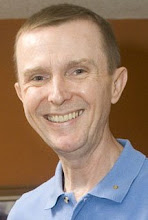"Two cameras! Why would I want to shoot an interview using two cameras? I can barely manage one."
Okay, I hear you. And, for the most part, one camera is all you're ever going to really need to videotape your family interviews. BUT, if you're feeling adventurous, there are times when two cameras can really come in handy.
Situation 1: Let's say you're doing an interview with a subject who has very few visuals (photos, films, memorabilia, etc.) available to lend visual interest to the finished program. Setting up two cameras (one a wide shot and one a close-up), gives you the option of cutting from one camera to the other during your edit. This lends some visual interest. It also helps when you want to rearrange answers or cut out some material. Let's say you're on the close up. You reach a point where you need to cut out some material. Simply end the close-up and pick up the new segment on the wide shot. This'll help hide the fact that you eliminated some of the interview.
Situation 2: Maybe you're interviewing two or three relatives at a sitting. What you can do is set up your first camera on a wide shot, so that you always see the entire group. Use your second camera to zoom in on whomever is speaking. You can hide any sloppiness that occurs as you move your close-up camera from subject to subject by covering those moves with your wide shot. And again, always having two different angles can hide cuts you make within the interview.
Of course, there are some challenges that result from using multiple cameras. You'll have double the amount of tape, for one. Plus, you need to have a plan for recording audio on both cameras. And then you'll have to line up the footage from both cameras in your editing timeline so that the audio and video from both cameras are in sync.
First of all, you'll need editing software that provides a timeline with a number of video and audio layers. After you digitize your videotapes, you're ready to begin. The first step is to create a "rough edit" during which you synch up all your tapes. Let's say your two-shot is on camera 1. Import tape 1 from camera 1 into video/audio track one. Find your first clap (you'll hear it, of course, but you should also be able to see it clearly on the audio waveform displayed on the audio track) and mark the point with a clip marker. Next, import your close-ups from camera 2. Find the first clap on this tape and then mark it. Finally, line up the two markers.
Now, play the two tapes together on the timeline. If you don't hear any echo, you're right on the money. If you do hear an echo, you may need to shift one of the tapes back or forward by a frame or two. Once the tapes are synched, group them together using your editing software. Grouping guards against accidentally shifting the position of one of the tapes and losing audio synch as a result.
Once the tapes are synched, create another timeline, sequence or project. Use your rough edit as a source and cut and paste segments from your rough cut into the new timeline as you create your final program.
Thursday, June 21, 2007
Subscribe to:
Posts (Atom)
